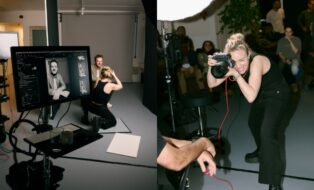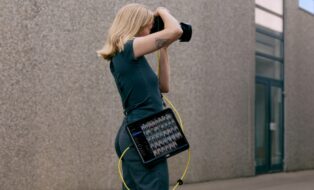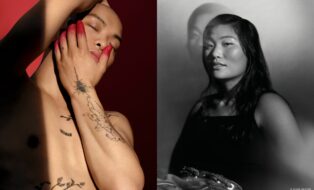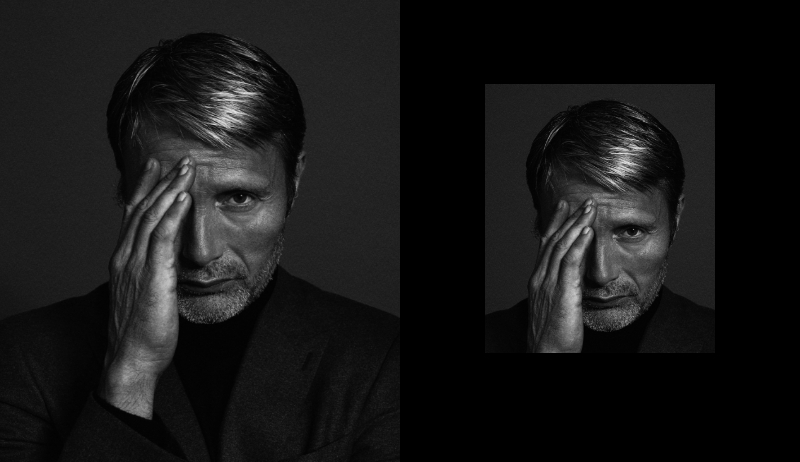
There is pressure in photographing one of your idols. Having only 10 minutes to set up and get multiple good shots of your idol takes that pressure to a different level. On assignment for Scandinavian Traveler (the in-flight magazine for Scandinavian Airlines), Danish portrait photographer Andreas Houmann took on the challenge of getting a cover and a spread of the world-famous actor Mads Mikkelsen while working against the clock.
Join us behind the image with Andreas as he shares how he spent 10 hours preparing for the 10-minute shoot and got what he needed without compromising on his vision.
Let’s start from the beginning. What was the brief you had for this job?
The brief was quite open because it was my first assignment for [Scandianvian Traveler], but they had seen many of my images and liked my style. So, it was up to me to create what I wanted.
I was told that I would have 10 minutes with the actor Mads Mikkelsen. From that, they wanted a cover shot and five to six images for the article.
My first thought was that that’s impossible. But after thinking about it, I realized what a great experience it could be. Mads has always been one of the top Danish people I want to meet and create a great image with. So, I told them I’d do it.
How did you go about planning the shoot?
Even though I knew I would only have 10 minutes, I didn’t lower my expectations for the final result. But to be able to create something special in such a short time, I knew that I had to plan everything down to the tiniest detail.
The most important thing for me was to not create an image of Mads that you have seen before. When you photograph famous people, they’re often just as cool as they seem. And so, I could have just taken a photo of him on a white or black background where he’s just looking into the camera, and that would also be a great and cool image. But I wanted to add something more.
Therefore, I knew I had to plan everything very thoroughly. I started to create a mood board, searching to see which kinds of images already existed of Mads.
I also knew that we would be at the d’Angleterre hotel in Copenhagen. I was told that we had a suite, but not which suite. So, I checked all the images of all the suites on their website.
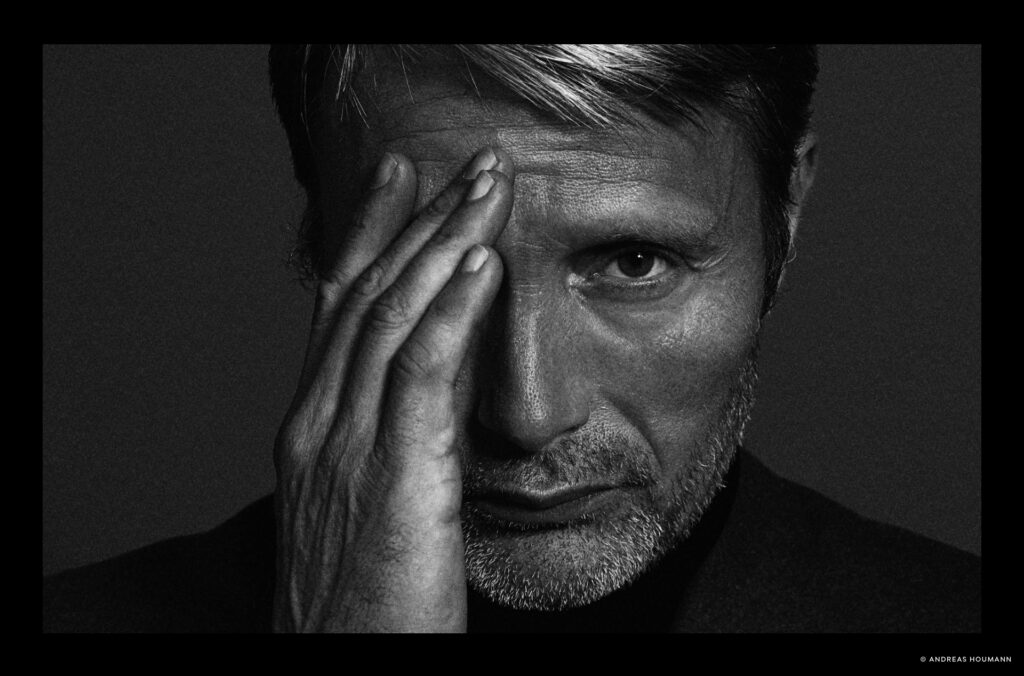
With so little time, it was important to me that we had a controlled setting where I would know which kind of light and background I would have to work with. When you only have 10 minutes, you can’t wait for the sun to appear. So the day before, I went to the hotel to search for any cool places inside.
I was also talking with Mikkelsen’s PR manager, who told me that if I needed to set up any equipment, it would be a part of that 10 minutes. And at that time, I had planned that I could come three hours before with my team, and we could set up and test everything in the suite before Mads would arrive.
So change of plans. Now the question was, “How could I still create a studio setting without using any of those 10 minutes?”
Because I had to use all the time together with Mads in front of my camera, we had prepared the background to fit exactly into the space. So, when Mads arrived, my assistant could quickly pull up the background while I was saying hello and presenting the idea. He’s such a kind person. So, it was important for him also to say hello to my assistant as well. And then we started shooting.
Did you know what kind of shots you wanted to get before the shoot?
I have a folder with over 5,000 pictures in it, and whenever I see an image I like, I save it and put it into that folder. It could be an interesting pose, something about the colors – it can be anything, but it goes in there so that I have an inspiration folder with only good images to get ideas from.
I have always been a fan of hands and faces, and I knew I wanted to create something with the hand and the face.
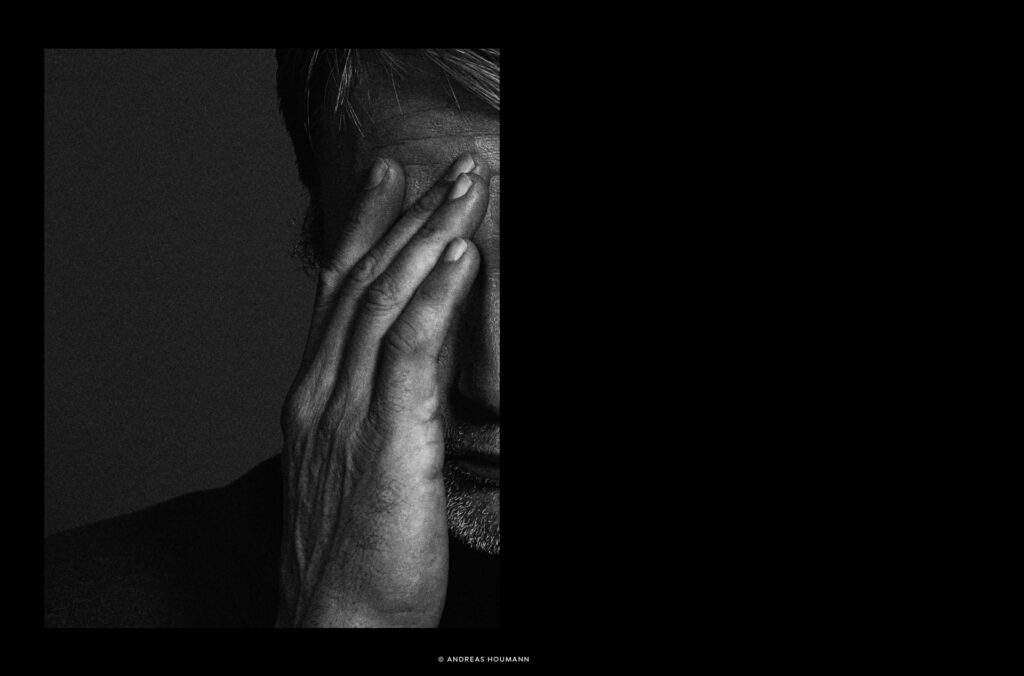
What was going through your mind during the actual shoot?
In my head, I knew that I couldn’t use the 10 minutes in front of the background because then I wouldn’t have anything else to show.
So, because I was aware of the time limit, I told my assistant to let me know when the first two minutes had passed. I had said to myself that four minutes was the limit for when I had to move on to the next setting to get the images for the spread inside the magazine.
In the end, it only took us two minutes to get this image. I had shown Mads the mood board to explain my thinking. That’s the great thing about working with artists and actors; they are professionals, so he got it right away.
What kind of direction did you give him?
He liked the idea of the hand, and I asked him to drag his hand from the top of his head down across his face because I like to have movement in my photos. It looks more natural than just standing there with his hand covering his face.
I want to create a space for the talent or the model to have free movement on a shoot. It’s very, very important that you, as a photographer, let the model or the talent know what you want to create and help them. But still, on the shoot, it is also important that you capture what comes in between. I always end up going for the in-between shots.
That’s often when you get the magical and personal shots.
RELATED ARTICLES
Behind the image with Marie Hald
Three photographers on finding their creative voice
What equipment did you use?
I used my Canon RS with a 50-millimeter lens and only had one light – a Profoto B10 with a beauty dish.
What settings did you use to get the shot?
F./5,6
1/200 sek
Iso:160
What have you done to the photo in post-processing?
I did some minor retouching of the skin. He’s a good-looking guy, so it didn’t take much. But I liked the idea of making it black and white and keeping the minimal colors.
Did you work with anyone else to get this photo?
I had an assistant with me on this shoot. The support of having a person I trust a 100% at my side who has their eyes on the lights so that I can focus on shooting is great.
When working with my assistant, stylists, makeup, or fashion stylists, it’s important to me that everyone is part of the team. Because if everyone on set is having a great time, then everyone wants to do the best thing to succeed. The atmosphere is just much nicer to be in, also for the talent or the model or the actor.
I let them know that if they have any great ideas or see something that I don’t see, to let me know because I only have two eyes.
You have a lot of experience working with well-known people. What is the secret to getting a good shot of them?
I always see the model or the talent as equal to anyone else. Even if it is one of my idols, I always meet the person in the same way. I let them know that my only goal is to create the best image and show them that I am well prepared. And when you do that, they relax.
I always let them know what my plan is and tell them that if they don’t like some of my ideas or have any comments, they should let me know. I like to let them be a part of the decisions. But still letting them know that I know what to do.
I also like reading articles about the person I am photographing, and I often try to go back and see what they have said and done in the past. It’s easy for everyone to know what is going on right now. But knowing something that is not just about the new film they’re making, showing that you have done some research, tells them that you’re willing to go a little bit further to get a good shot.
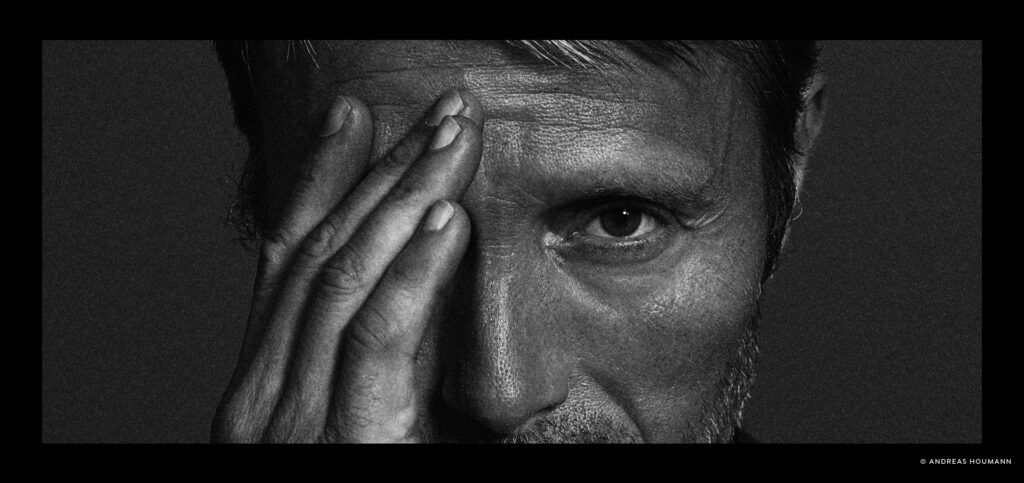
A picture says a thousand words. What do you think this image says?
I think this picture is more of a mood than a story. It wasn’t important for me to create an image with a particular story here. I’m very much into aesthetics, authenticity, and presence. Those were the three main goals for me in the picture.
And what I really like about this picture – and maybe it is something I always like – is that you don’t see everything. Because, as a person, it’s rare that we just give away everything. So, when Mads is holding his hand in front of his face, it’s like, “I’m here, but a part of me is not,” and I really like that.
How does this image represent your work as a whole? Is it representative?
Yes, I think this image represents well who I am as a photographer, both in style and mood. I’m not creating images with a lot going on in them. I really like the calmness. I really like a lot of the great old photographers, Peter Lindbergh and people like that. Because when you look at their pictures, they were cool 30 years ago, 20 years ago, ten years ago, and they’re cool today. They have that simplicity, which is not just a trend.
Follow Andreas on Instagram to see more of his work
New to Capture One? Try it for free for 30 days here
